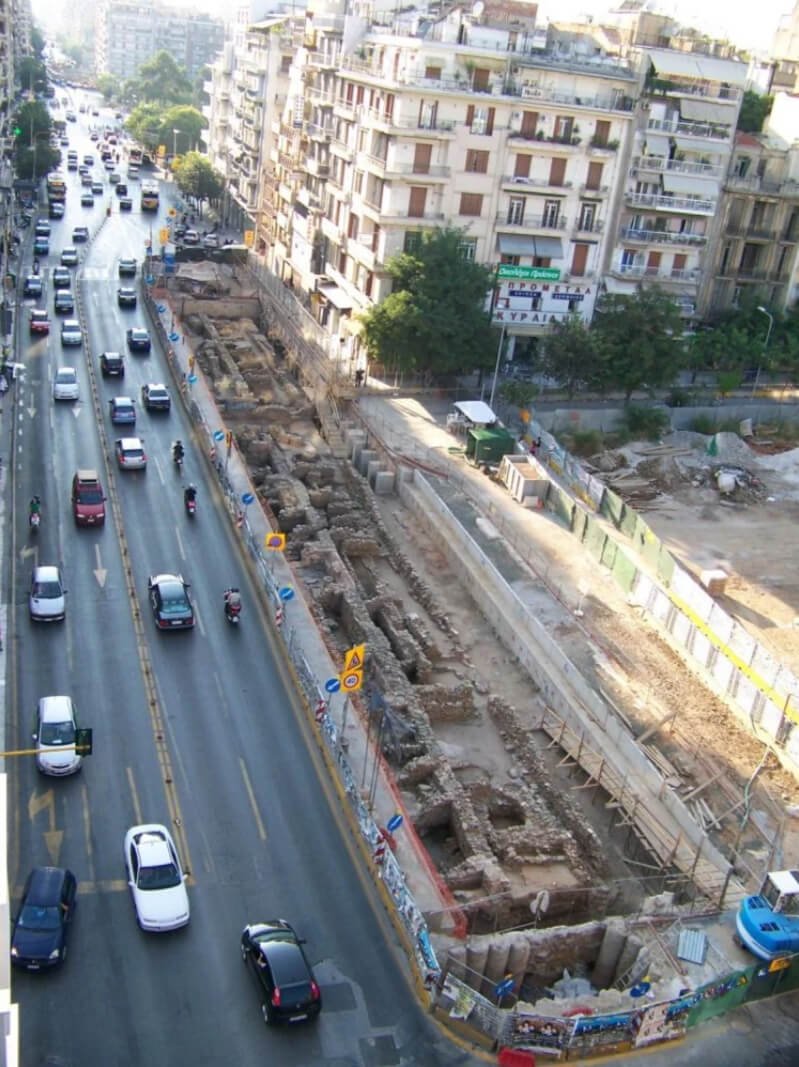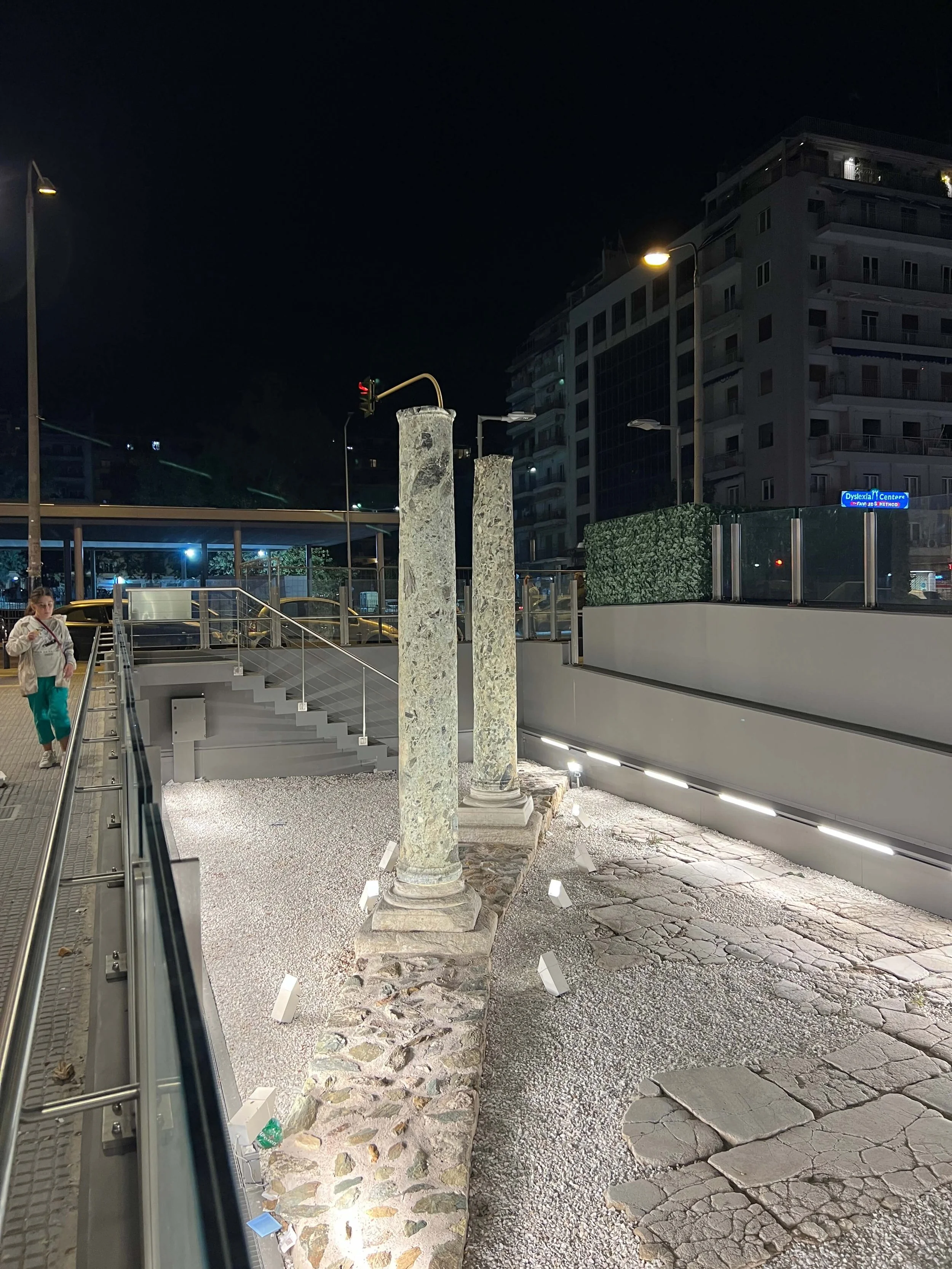By the archaeologist editor group
From Ancient Roots to Modern Rails: The Ancient City Beneath Thessaloniki's Metro
The ancient city of Thessaloniki, nestled in the heart of Greece, has long been a treasure trove of history and culture. But it's not just what's on the surface that tells the story of this vibrant metropolis. Under the bustling streets and modern cityscape lies an archaeological wonder waiting to be explored. Thanks to the ambitious Thessaloniki Metro project, this hidden world is now coming to light.
The Minister of Culture, in her recent statement, highlighted the significance of the Thessaloniki Metro project and the remarkable archaeological discoveries it has unearthed. She emphasized the government's commitment to preserving the cultural heritage of the city while simultaneously fostering development and progress for its citizens. In her words, "The cultural heritage does not tarnish the development perspective of our country. It is a comparative advantage and a multiplier of our economic and social progress."
The Thessaloniki Metro Project, one of the largest rescue excavation research endeavors ever undertaken in Greece, has provided an unparalleled opportunity to uncover the city's rich history. Stretching from its foundation in the time of Cassander in the 4th century BC to the early 20th century, this excavation has revealed a layered tapestry of human civilization. The heart of the project lies in the historical center of Thessaloniki, both inside and outside the ancient city walls, where the density of ancient remains is astonishing. These relics are so close to the modern road surface that they're often revealed at a depth of up to 9 meters.
Particularly noteworthy are the "Venizelos" and "Agia Sophia" stations, where the density of antiquities and the sheer number of mobile finds—over 300,000—speak to the rich history of Thessaloniki. The site tells the story of habitation from Hellenistic times to the Byzantine era, with a focus on the latter.
Out of the thirteen Metro stations in total, artifacts have been discovered at the two historical center stations ("Venizelou and Agia Sofia"), stations outside the city walls to the west ("Demokratias, Neos Sidirodromikos Stamhos"), and to the east ("Fountain," "University," "Fleming," and "Pylaia Station"). To protect and promote these invaluable antiquities, the Ministry of Culture deemed it necessary to construct shelters. These structures serve to shield the fragile remains from environmental factors and rainwater while also providing a viewing opportunity, primarily along the Egnatia axis.
Moreover, the archaeological site at the southern entrance of the "Venizelos" Station has been enhanced. The circular marble-paved square has been repositioned, and a section of the portico pilaster has been restored. Additionally, two intact columns made of atrachium stone, discovered during excavation, have been carefully restored.
Inside the "Venizelos" Station, as well as at "Democracy Square," "Fountain," "Agia Sophia," and "Fleming" Stations, exhibition interventions will showcase the unique character of each area of the city. At Agia Sophia, the focus is on the overall stratigraphy and the overlapping historical phases, providing a comprehensive view of the city's history. The movable findings from the excavation will also be exhibited in showcases.
The collaboration between the Ministry of Culture and Hellenic Metro throughout the project highlights the success of a well-planned cultural policy. Thessaloniki Metro demonstrates that the presence of antiquities within a major public project can be a significant advantage. Archaeological research weaves stories from the city's eternal life, creatively merging with the development perspective of modern cities. The historical value derived from the archaeological research, especially at the "Agia Sophia" and "Venizelou" stations, where residential evidence of Cassander's Thessaloniki was uncovered, is immeasurable.
In just a few months, the Metropolitan Railway, with its five station museums, the archaeological site at Hagia Sophia, and the largest international archaeological site integrated into a major technical project, will become a part of Thessaloniki's daily life. This project promises to not only change the city but also enrich the lives of its residents and visitors alike. As the Minister of Culture aptly put it,
"The Metropolitan Railway is a project that will change the daily life of the city—a gift to the people of Thessaloniki, connecting them with their rich past and promising an exciting future."














